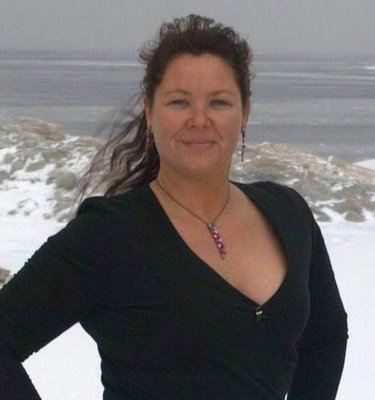28 May - 4 June
As I sit here typing it is blowing about 80knots outside and visibility is absolutely zero.
It was an experience getting to work in the pitch black in the wind this morning I must say. But that is Ok, we haven’t had a Blizz for about 3 weeks so I guess we were due one soon enough anyway. I don’t mind it when it Blizz’s because it warms the place up. The current temperature is a rather toasty -10degrees. A far cry from the -27 we have had for most of the week I must say.
Oh and we had a great Aurora two nights ago. Spectacular! So now we have seen a Sun Pillar, Sun Dogs and Auroras. Gotta love this place!
This week I am going to tell you about another work area of mine – The Geomagnetic Observations that I perform each week.“We are all here for science!” is the catch cry of the Div. So over winter, after the science community disappears for the winter, science work does still go on. One ongoing project is for Geosciences Australia. GA has three main areas of investigation: Geomagnetic, Seismic and Geodesy.
The Geomagnetic Observations is where I am mainly involved. This consists of Magnetic Observatory which used to be a little green wooden pyramid on the south side of the melt lake. In winter it often took an hour to dig out the Blizz tail before you could even enter the building. Some genius years ago decided the door should be on the Blizz side of the building – just brilliant! Must have been a scientist thought of that great idea. ;o]
This year a big project saw the construction and installation of a brand new shiny red “Apple” which is perched on the side of the hill below the Mabel hut. Magnetic Observations are now taken from this site once each week. No digging out snow Blizz tails for this little black duck - I am also determined to paint a huge white daisy on the outside of the hut before I depart this station! We had a fire in the old green hut earlier in the year, a thermostat burnt out. Luckily the hut seals so well and the fire burnt itself out, starved of oxygen, without much damage to the building or the equipment inside. So, perhaps it was an omen that we needed a new hut anyway.
Data from the weekly observations is combined with data from the SAS’s (Space and Atmospheric Sciences) seismic variometer (explanation to follow) to measure and track the constantly moving earth’s magnetic field. The observations take upwards of 1.5hours each week to perform. There are two main instruments used called a Declination Magnetometer and a Proton Precession Magnetometer to find and measure the magnetic field. At the moment I am running some experiments for GA as it appears the accuracy of the current variometer may have been called in to question. Data from these experiments will be sent to GA for analysis by the guys in Canberra.
The Seismic area consists of an extremely accurate GPS receiver, the antenna for which is located on a small hill about 100m west of the Balloon shed. The receiver itself is in the Ops building. The receiver is so accurate that it is used to track the movement of the continent (about 5mm per year). The data from the receiver is also transmitted back to GA’s head office in Canberra via Anaresat.
Geodesy is the study of:
- The size and shape of the earth
- The measurement of the position and motion points on the earth’s surface, and
- The configuration and area of large portions of the earth’s surface.
So there you have it - Another fascinating glimpse into the working world of Casey Station, Antarctica.
With the Blizz here at the moment there is no chance to go out for a blat on the quads – obviously. But hopefully next week will see me head out and about for a bit of R n R in the wilderness. But life is still great down here and I am still love being at Casey. Work is busy and the time is just flying by. It is almost Mid-winter. Hard to believe I have been here 6 months already!
Anyway, till next week, have a good one
Trace ;o]


0 Comments:
Post a Comment
<< Home